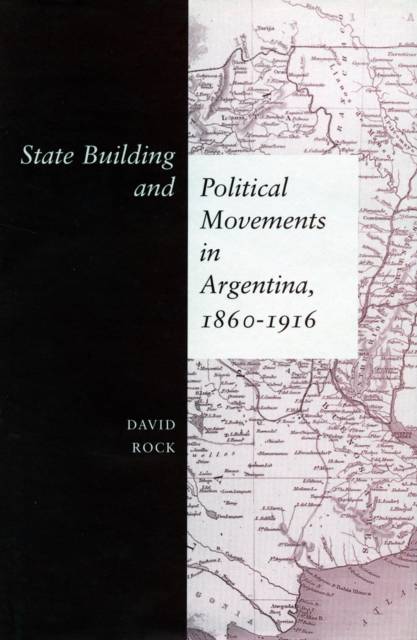
- Retrait gratuit dans votre magasin Club
- 7.000.000 titres dans notre catalogue
- Payer en toute sécurité
- Toujours un magasin près de chez vous
- Retrait gratuit dans votre magasin Club
- 7.000.0000 titres dans notre catalogue
- Payer en toute sécurité
- Toujours un magasin près de chez vous
Description
In the late nineteenth and early twentieth centuries, under the political system known as the oligarchy, Argentina evolved from a dictator-dominated backwater to the leading nation in Latin America. This book examines the formation of a formidable nation-state by studying three political movements: Mitrismo, led by Bartolomé Mitre; Roquismo, under General Julio A. Roca, which ruled the country from the 1860s to 1910; and Radicalismo, a political movement headed by Leandro N. Alem and Hipólito Irogoyen that sought to replace the oligarchy with a more democratic system.
The book focuses on the methods these three political movements employed to attract allies in the rural provinces in order to create a national political coalition. Mitre enjoyed only a brief period of national dominance in the 1860s, his chief weakness being a narrow power base centered in Buenos Aires, which he was unable to extend. Roca began his career outside Buenos Aires in Córdoba, and came to power through a combination of military victories and the cultivation of local political support. In many respects, Radicalismo later succeeded by copying Roca's techniques of winning the support of provincial governors and local justices of the peace.
Through its overarching themes of consolidation and coalition building, the book addresses several significant issues in Argentine politics during the period, such as the fate of the Federalists and the regional warlords, whom Mitre and his successors attempted to destroy but who were absorbed by Roca into his movement. It also studies the complex internal politics of Buenos Aires, including the formation of the Autonomist Party and the rebellions of 1880 and 1890.
Spécifications
Parties prenantes
- Auteur(s) :
- Editeur:
Contenu
- Nombre de pages :
- 328
- Langue:
- Anglais
Caractéristiques
- EAN:
- 9780804744669
- Date de parution :
- 27-06-02
- Format:
- Livre relié
- Format numérique:
- Genaaid
- Dimensions :
- 163 mm x 243 mm
- Poids :
- 603 g

Les avis
Nous publions uniquement les avis qui respectent les conditions requises. Consultez nos conditions pour les avis.






